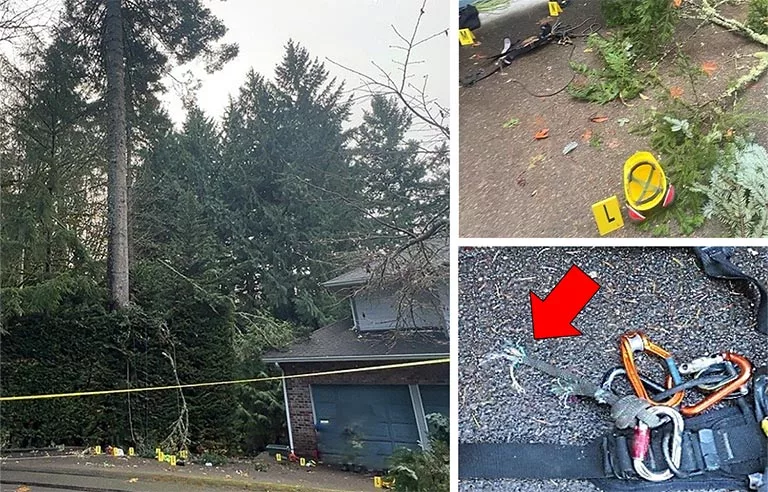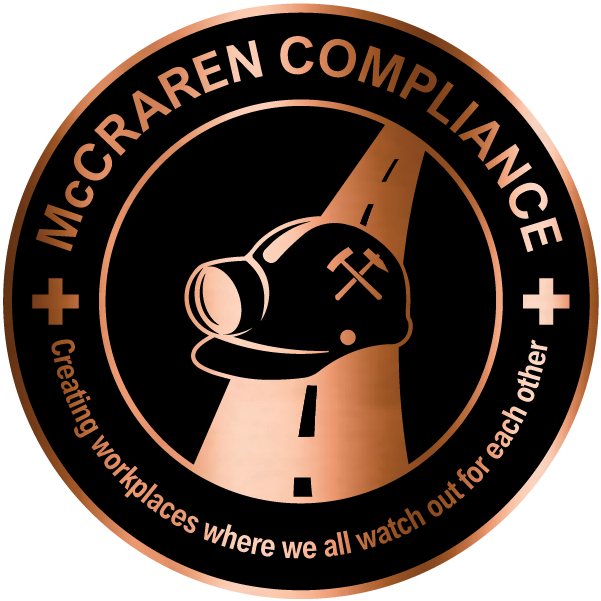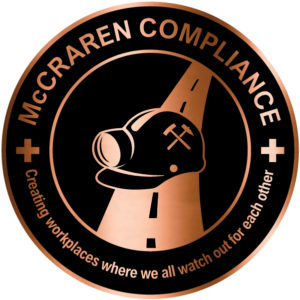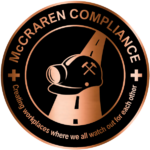
FACE photo: NIOSH
Case report: #71-269-2025
Issued by: Washington State Fatality Assessment and Control Evaluation Program
Date of report: Aug. 4, 2025
An experienced tree trimmer was the climber on a five-member crew removing a 120-foot fir tree. The 36-year-old trimmer’s personal protective equipment and work gear included a helmet, safety glasses, gloves, climbing spikes, a saddle (harness), a rope flip line (lanyard), a rappelling line (lifeline) and a rigging line. He also had a handsaw and chain saw to cut branches. He had climbed about 50 feet up the tree, cutting branches along the way, when he screamed and fell backward to the pavement below. He had cut his flip line with his chain saw. His co-workers, who were clearing dropped branches on the ground, saw him fall and ran to his aid. They began CPR and called 911 and the employer. First responders arrived and transported the trimmer to the hospital, where he was pronounced dead. Investigators found that the worker knew the hazards of not using a lifeline while working at height but decided to use his rope flip line as his only point of attachment. He had a second rope or lifeline on his saddle but did not tie it off when using the chain saw. The employer and crew supervisor allowed the trimmer to use a personally owned, lighter, soft-fiber rope as a flip line instead of the heavier, cut-resistant steel-core line they provided to him. The supervisor told investigators that they routinely allowed trimmers to use gear that was comfortable or easier to handle to maintain their climbing confidence. The employer had an outdated incident prevention program and did not conduct and document safety meetings, PPE hazard assessments, and effective worker orientation and training.
To help prevent similar occurrences, employers should:
- Develop and enforce policies and standard operating procedures in their incident prevention program that require tree trimmers to:
- Always use steel-core flip lines (except near power lines) and high-strand rope lifelines for a second point of attachment. Climbing gear should be top quality, reputable and arborist-certified.
- Have documented recurring training in arborist fall protection systems, including PPE and climbing gear identification and proper inspection, use, cleaning, maintenance and storage.
McCraren Compliance offers a full range of safety and health training and consulting services. Plus we can help you incorporate well-being into your traditional systems in order to support the Total Worker Health of your workforce.
Call 888-758-4757, email info@mccrarencompliance.com or visit our website www.mccrarencompliance.com
Original article published by Safety+Health an NSC publication


